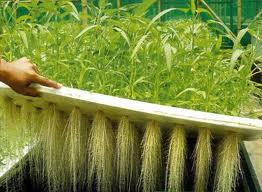Aeroponic Systems


Aeroponic systems are praised for being relatively simple to use and efficient. However, beginning gardeners should be careful in this type of system because it is very sensitive to errors. Examples of this type of garden include the Aeroflo and many other types of home-made systems.
True aeroponic systems vary from hydroponic systems because in aeroponics, there is no growing medium involved. However, because a plant in an aeroponic system is still fed through a water-based nutrient mist, it can still be considered a type of hydroponic gardening. Also, some aeroponic techniques are often used in the hydroponic process, particularly through the cultivation of cuttings.
In an aeroponic system, a plant's root structure is contained in a dark chamber where it is misted by a nutrient solution. A water pump inside the chamber forces the nutrient solution through a series of emitters or spay nozzles which create a fine mist that is aimed at the plant's roots. Because there is nearly 100% humidity inside the chamber, the roots have the greatest potential absorb the nutrients. Also because the roots are not in any type of medium, they have the greatest access to oxygen. The increase in access to higher humidity, oxygen and nutrients allows the plant to grow at an expedited rate. Aeroponic system are also beneficial because of their reduced water usage.
However, aeroponic systems require a greater amount of attention and care because of the system's set up. If a pump fails or an emitter clogs,the plant will suffer almost immediately. Also, any defects in pH or nutrient concentrations will be seen more rapidly with aeroponic systems because thew growth process is so exaggerated.
